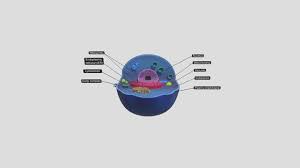Ribosomes : 3D Model

Using electron microscopy, scientists have recently managed to produce a 3D model of a part of the human cell, the ribosome.
- Ribosomes are non-membrane-bound cell organelles made of RNA and proteins.
- They are found in both prokaryotic and eukaryotic cells.
- In eukaryotic organisms, ribosomes are found in the cytoplasm, mitochondria, and chloroplast.
- All prokaryotic ribosomes are found free in the cytoplasm of the cell.
- Ribosomal structure and function are strikingly similar in all organisms and organelles.
- They are made of two subunits, the large and the small subunit which comprises ribosomal RNA (rRNA) and proteins.
- They are complex molecular machines that make proteins from amino acids in a process called protein synthesis, or translation.
- Every cell needs ribosomes to manufacture proteins.
- The ribosome reads the messenger RNA (mRNA) sequence and translates that genetic code into a specified string of amino acids, which grow into long chains that fold to form proteins.
- The newly formed proteins detach themselves from the ribosome site and migrate to other parts of the cell for use.




